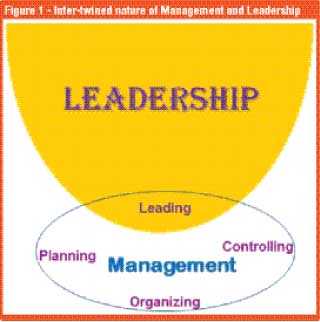Thursday Nov 28, 2024
Thursday Nov 28, 2024
Monday, 15 June 2020 00:15 - - {{hitsCtrl.values.hits}}

Do our so-called ‘managerial leaders’ have a clear understanding of what they are supposed to achieve?
 COVID-19 is not going to be a thing of the past. At least this statement will be valid for a considerable period of time. With the general election day announced in Sri Lanka, there will be verbal diarrhoea from many politicians with mega promises. The dire need for managerial leadership in all fronts is more acute than any other time. Recent events related to COVID-19 local and global prompt us to ponder on managerial leadership with its promising prospects.
COVID-19 is not going to be a thing of the past. At least this statement will be valid for a considerable period of time. With the general election day announced in Sri Lanka, there will be verbal diarrhoea from many politicians with mega promises. The dire need for managerial leadership in all fronts is more acute than any other time. Recent events related to COVID-19 local and global prompt us to ponder on managerial leadership with its promising prospects.
Overview
“There are no good or bad institutions; rich or poor institutions; new or old institutions; only well-managed or ill-managed institutions”, so said Peter Drucker, a veteran management thinker. What he stated makes profound sense not only for institutions but for nations as well. We need to master management and to understand leadership in order to demonstrate managerial leadership.
What is management in the first place? Any management textbook will give the definition of modern management as “a set of activities, including planning and decision making, organising, leading and controlling directed at an organisation’s human, financial, physical and information resources, with the aim of achieving organisational goals in an efficient and effective manner.” In essence, it is all about achieving goals, which was the case in ancient times as well.
In a crude sense, management can be broken into three parts: man, age and ment. It essentially speaks about people, times and actions. As another veteran management thinker Henry Mintzberg often advocates that successful management involves interpersonal, informational and decisional roles. 
Any organisations can be viewed as a system, comprising inputs, throughputs and outputs. Hence, management can also be defined as human action, including design, to facilitate the production of useful outcomes from a system. This view opens the opportunity to ‘manage’ oneself, a pre-requisite to attempting to manage others.
Leadership is a much-talked topic in both private as well as public circles. According to R.M. Stogdill, a behavioural researcher, leadership is the most vastly researched and least understood phenomena on earth. You may find the number of books on leadership in a management bookshelf easily outnumbering the rest. The point here is the vitality of leadership for organisational success. Also, there is an increasing demand for it.
Perhaps the only ship that survives a storm is leadership. It is not about positions and titles, but about decisions and actions. Leadership is essentially a mindset. We look at the leaders at the top but not the “leaders at the tap”. Dynamics of leadership highlights the leaders and laggards in the society showcasing actions and inactions.
Inter-twined nature of both
Management essentially is a process. Leadership in fact is a phenomenon. Management has four key pillars, namely planning, organising, leading and controlling. The pillar or function of leading that involves guiding a team and instructing them to achieve set goals is the overlap between management and leadership. Figure 1 illustrates this connection.
Every manager has an opportunity to move beyond the management process in becoming a leader. Every leader has to rely on some elements of management in order to get things done. That’s why we need both managers and leaders in co-existence. That gives birth to the highly practical concept of “managerial leadership”.
Evidence from east and west
In the five hundred and fifty Jathaka stories, Bodhisattva is portrayed as a leader and a manager in a significant number of cases. Using of physical, human, financial and information resources to achieve the desired goals was the norm.
In Vannu-Patha Jathaka, it tells a story of thousands of bullock-carts passing a dessert and going out of water. The leader had to summon the key team in finding solutions to the water issue. They search area and find a rock, and simply by keeping their ears closer to the rock surface, they could hear water flowing down. They plan and organise resources to dig a well close by, and water started to spring out, quenching all their thirst. Simply put, this is management in action.
In the Bible, particularly in the Old Testament, we can see variety of stories highlighting managerial and leadership issues. The way Moses took Israel people out of Egypt in search of a promise land had variety of episodes of planning, organising, leading and controlling. Taking decisions in the face of uncertainty and managing with scarce resources were prominent features of their journey of forty years.
Perhaps the best-known Chinese management wisdom comes from the classic masterpiece, the Art of War. Written by Chinese general Sun Tzu in the 6th century BC, The Art of War is a military strategy book that, for managerial purposes, recommends being aware of and acting on strengths and weaknesses of both a manager’s organisation and a foe’s. It gives practical and sensible advice from military front which is relevant to market fronts.
The pyramids of Egypt, some of which are among the largest man-made constructions ever conceived, constitute one of the most potent and enduring symbols of Ancient Egyptian civilisation. It is generally accepted by most archaeologists that they were constructed as burial monuments associated with royal solar and stellar cults, and most were built during the Old and Middle Kingdom periods.
Sri Lanka is well-known for its ancient water civilisation. The earliest reservoir referred to in Mahavamsa, the great chronicle of the history of island was the Jayavapi built in the reign of king Pandukabhaya during 377-307 B.C. The construction of larger scale reservoirs initiated by the time of king Vasabha during 65-109 A.D. and by 500 A.D., involved very advanced hydraulic structures which would have required sound knowledge of key hydraulic principals pertaining to the rainfall, runoff and storage volumes. These are all evidence for management and leadership in action.
As in the case of most management concepts, what was practiced for a long time got branded as “servant leadership” in the west. Robert Greenleaf, a scholar from USA gets the credit for documenting the features and facets of servant leaders. Having worked for AT&T for several decades, he realised the limitations of typical administrative leaders. Having contemplated an alternative, the resulting model was the repackaged concept of servant leadership.
Servant-leaders achieve results for their organisations by giving priority attention to the needs of their colleagues and those they serve. Servant-leaders are often seen as humble stewards of their organisation’s physical, financial and most importantly, human resources.
The need to perform
“Management is efficiency in climbing the ladder of success; leadership determines whether the ladder is leaning against the right wall”, so said Stephen Covey. It highlights the need to have efficient managers and effective leaders. Do we have them in Sri Lankan public and private sectors? This brings us to the arena of performance.
Managerial leadership revolves around performance. They should practice what they preach. Leaders should inspire, influence and instruct in such a manner to initiate result-oriented action. In contrast, laggards are passengers. They hamper the progress by being lazy and lethargic. Indecisiveness resulting in inaction is often common in their approach. Do we see more leaders or laggards? The answer lies in the results they achieve. Let me focus more on the business managers and public administrators leaving politicians aside. It is better to light a candle than curse the darkness.
There are a few fundamental questions that need answers. Do our so-called ‘managerial leaders’ have a clear understanding of what they are supposed to achieve? We should know both the desired level and the current reality. Grappling issues with confidence as opposed to groping in the darkness is what is required with a lot to reflect and to respond. This becomes increasingly acute in the context of battling the COVID-19 pandemic.
Handling COVID-19 challenges
I was inspired by a series of articles in the Forbes magazine recently in describing the needed leadership in the post-COVID-19 pandemic. In sharing the essence, let me propose three Hs, viz, holistic, humble and humane.
Holistic
The managerial leaders should see the big picture in seeing the whole than just the parts. It reminds me of the famous poem by John Godfrey Saxe who talks of “six blind men and an elephant”. COVID-19 is an invitation to see the big picture in the socio-economic arena rather than overly worrying on one’s own businesses. It is also an invitation to identify the associated complexities in a comprehensive manner.
Humble
The “locking down” experience was an invitation for us to be “looking up” in understanding the simple things where true happiness lie. It was also an awakening for us to be humble in seeing the reality of life in a mature manner. As Jim Collins highlights in his famous “good to great” hierarchy, level five leadership, which is great leadership in action, require professional will and personal humility. Great leaders do not go on others shoulders but carry others on their shoulders. That service orientation being a true servant leader is the basis for true humbleness.
Humane
One good result COVID-19 brought about in the business circles is the challenge for the leaders to be humane. It has been a painful realisation of the value of humans and to achieve humane results. Despite the harsh treatment of some naïve administrators, most of the sensible leaders have realized the need to become humane. Managerial leadership call for empathy towards people and effectiveness towards performance in a balanced manner. It is a case of practicing what you preach by way of recognising people as your most valuable asset and collaborating with them in bouncing back with better business results.
Way forward
I have often emphasised in many platforms the need to have the right person handling the right job. Competencies should be more important than connections. Have we tapped the right talent in assigning crucial tasks? The ample presence of efficient managers and effective leaders at all fronts is the luxury that we do not have. Hence the solution is to foster managerial leadership in a strategic and comprehensive manner with holistic, humble and humane aspects. We need managerial leaders who genuinely serve and not malicious laggards who grumpily survive.
(The writer can be reached through [email protected], [email protected] or www.ajanthadharmasiri.info.)